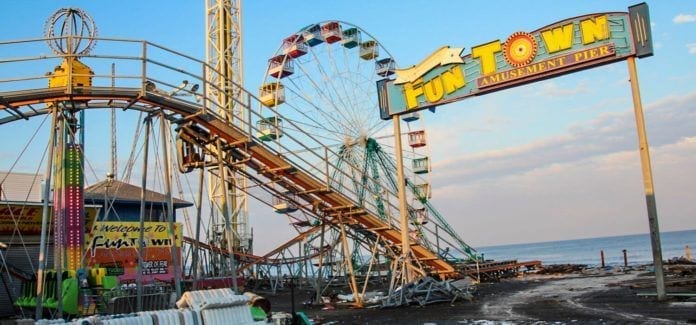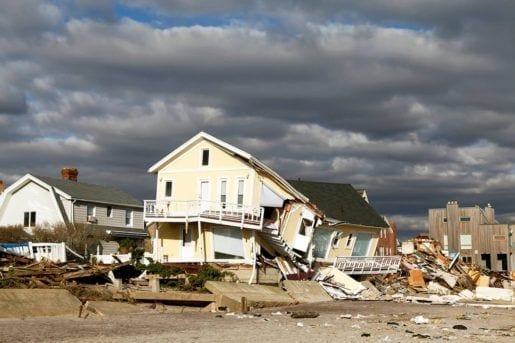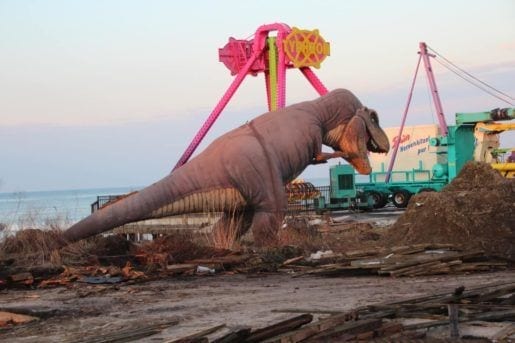Pope Francis, Bill Nye the Science Guy, The Rutgers Climate Change Institute and many NJ residents. Add to the list an ocean full of climate scientists and environmentalists, including staff at the Jacques Cousteau Education Center; who aid New Jersey coastal communities, such as Toms River, in preparing for and planning for recovery after major storms. (Like Hurricane Sandy.)
Count all of them as caring about climate change and the Jersey Shore.
More from Best of NJ
Profiles in Caring
The Pontiff
According to National Geographic, Pope Francis is outspoken in supporting scientific research concerning the connection between climate change and overuse of fossil fuels. He spoke to the nation from the White House on September 24, praising the Obama Administration’s efforts to reduce air pollution, and also stressed the importance of climate change legislation while meeting with Congress.
The Science Guy
Nye, whose funny, nerdy videos were a staple of middle school science classes for many millennials, made climate change the central topic of his spring 2015 commencement address at Rutgers University.
Nye told graduates that climate change will be the great struggle of their generation and that one of their responsibilities will be to see that the world stops treating the atmosphere as a “dump” for carbon waste.
The 59 Percent
Yale University published a climate opinion study in April based on data gathered in 2014. Aside from 59 percent expressing worry about climate change, 69 percent said they think global warming will harm future generations. The interactive opinion maps also estimate that 78 percent of New Jerseyans think carbon dioxide should be regulated as a pollutant.
Toms River and JCNERR. With staff help from the Jacques Cousteau Center’s National Estuarine Research Reserve (JCNERR) in the Ocean County borough of Tuckerton, Toms River completed a flood preparedness study.
The study is part of a state program called Getting to Resilience, which is available to other New Jersey coastal communities at risk for flooding.
Rising Seas, Rising Worries
Climate change encompasses many kinds of environmental alteration. However, what likely worries New Jerseyans the most is the potential of global warming — a major aspect of climate change — for raising ocean levels and temperatures high enough to turn hurricanes into super storms and, eventually, to submerge coastal lands.
Only a month after Hurricane Sandy devastated the New Jersey coast and much of the Northeast in October 2012, an op/ed piece in The New York Times Sunday Review asserted that sea level on the East Coast may rise by 5 feet within 100 years, destroying “much of Atlantic City and the Meadowlands.”
Yet if you keep up with information about climate change — including the Climate Central interactive online Surging Seas Risk Finder — and are also a betting person, you know that odds are excellent that many parts of the barrier islands and coast may be awash with 5-foot floods or higher much sooner than 2112.
Surging Seas Risk Finder
The temperature of the world’s oceans, on average, has risen 1 degree F in the past century with the most rapid increase occurring in the past two decades, according to the Princeton, New Jersey, based organization Climate Central. It is enough to melt polar ice, which leads to rising sea levels and flooding.
Climate Central is an organization of scientists and science journalists that created the interactive Surging Seas Risk Finder; this analyzes sea level rise and its many impacts. It provides interactive maps for seeing locations at risk of coastal flooding; and also forecasts potential coastal flooding in locations using the height of flood waters above the high tide line.
The Surging Seas tool explains that water levels can change because of more than just rising sea levels; local tide levels and storm surges also play a major role. It provides forecasts of flooding at levels ranging from 1 to 10 feet above high tide line; and also analyzes what populations, types of buildings, infrastructure (such as roads and water systems) require monitoring.
For example, the chance of land at 5 feet above high tide level flooding in Atlantic City is quite high; it will be 27 percent in 2040 and 50 percent ten years later. The probability increases to certainty — or 100 percent — in just 65 years. The buildings that will flood include two libraries, five government buildings, nine schools, 23 medical facilities and almost 14,000 homes.
Climate Change Response
Are you part of the 59 percent of New Jerseyans Yale identifies as worrying about climate change? If so, Climate Central’s Surging Seas website and JCNERR’s Getting to Resilience process won’t resolve all your concerns.
However, both tools can help you decide where to live or encourage wise community development, emergency preparedness, and recovery planning. All are good first steps in dealing with climate change in your own community; and becoming someone who cares about the Jersey Shore.
Hero image at the top features the Fun Town Amusement Park in Seaside Park that was devastated in Hurricane Sandy.















